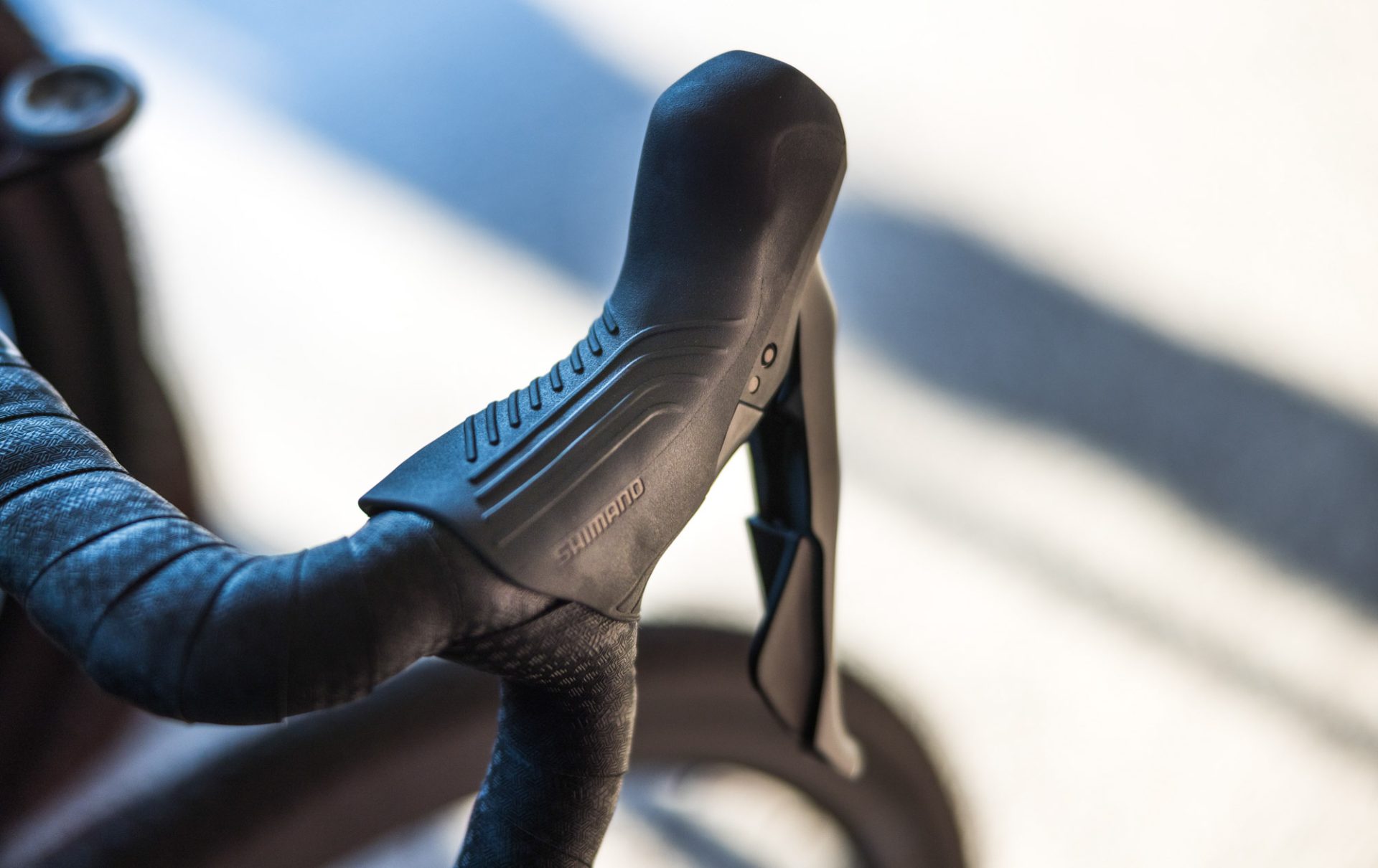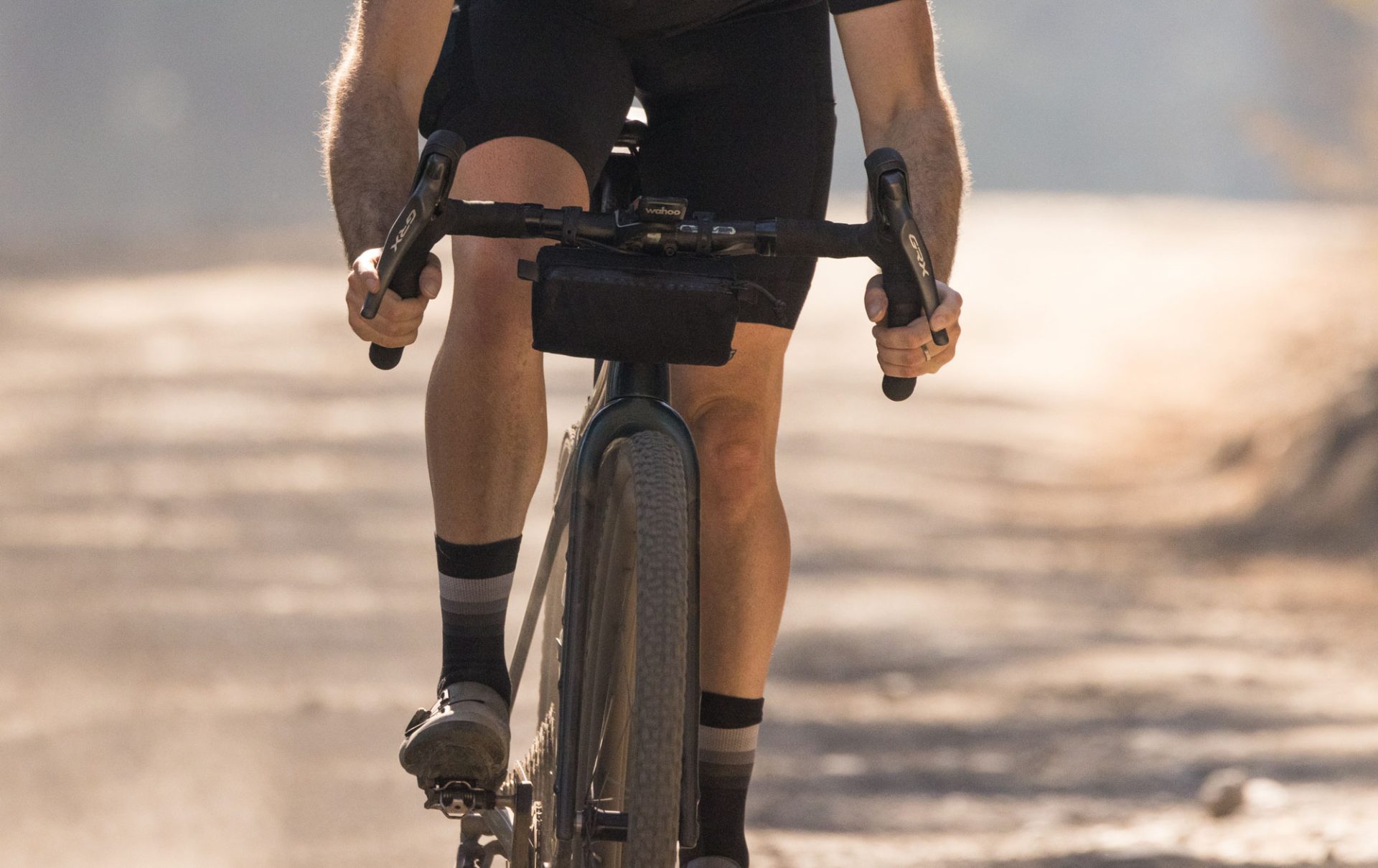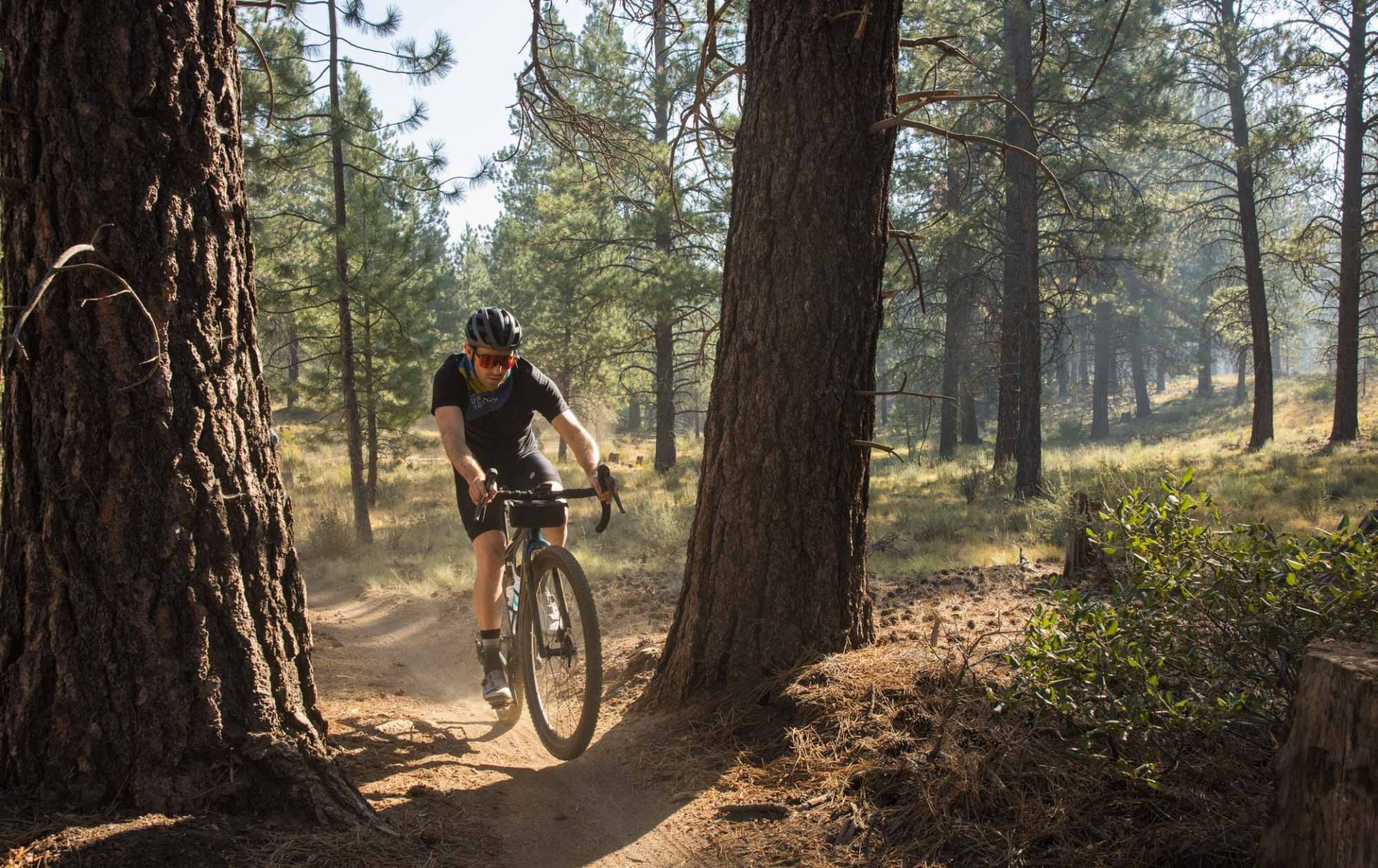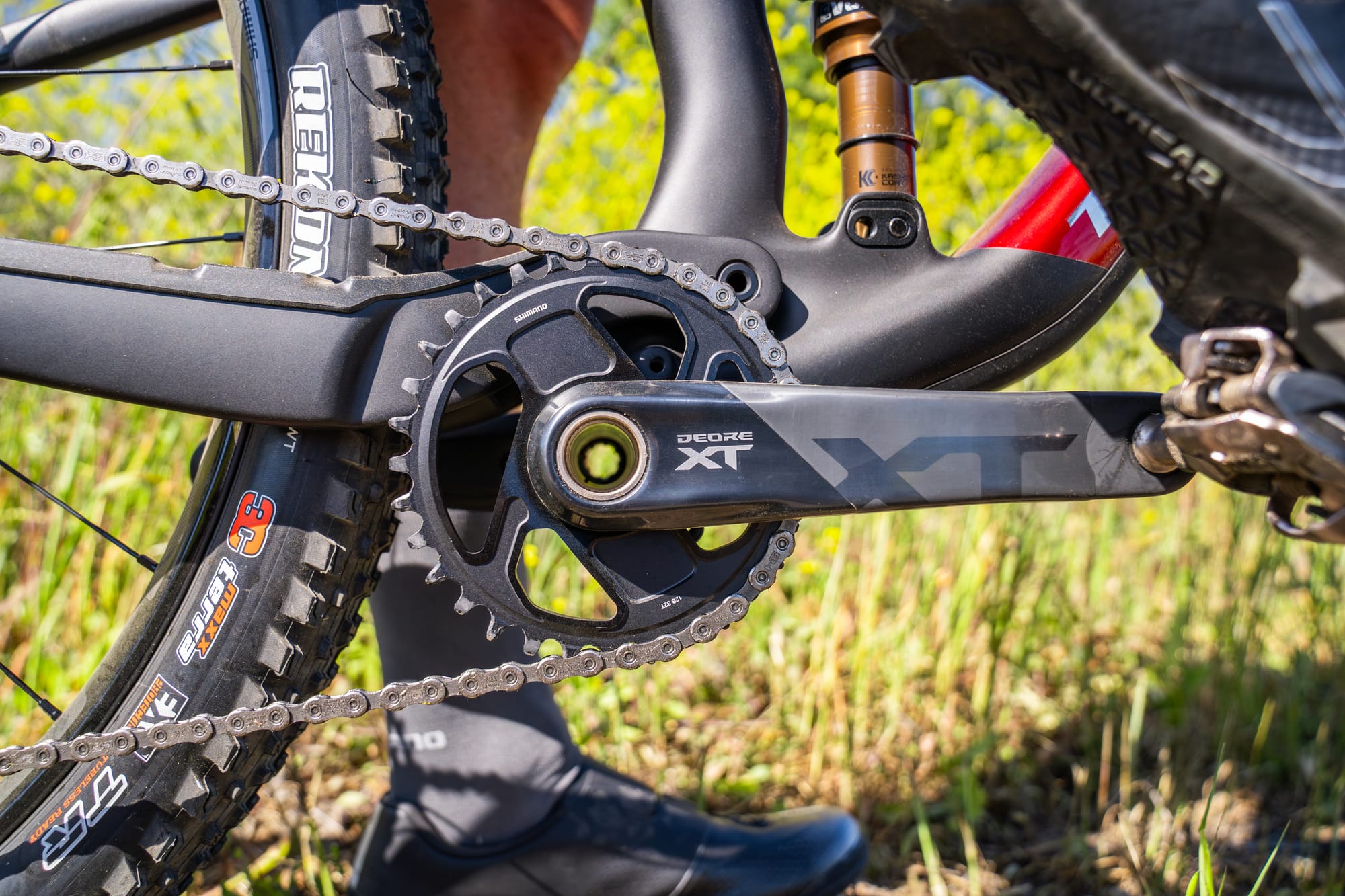It wasn’t so long ago that many feared the days of mechanical shifting at a performance level were numbered. SRAM was seemingly all-in on wireless, and Shimano had moved to 12-speed on Dura-Ace, Ultegra, and 105 without even a whisper of mechanical options.
Thankfully, such fears can now be put to rest with Shimano revealing 12-speed mechanical options on both road and gravel. For the road, there’s the new 105 R7100. Meanwhile, gravel riders get a slightly higher-end RX820 option at a comparable tier to Ultegra (road) and XT (mountain).
I’ve covered what’s new (and what isn't) with Shimano 105 R7100 elsewhere. Here, I provide a hands-on look and early impressions of Shimano’s new 12-speed mechanical GRX group – RX820.
For those interested in audio, I recorded a podcast with Shimano's Dave Lawrence and Nick Legan that covers much of the detail, including an explainer on HG+, a little bit about new 105 12-speed mechanical, and a few geekier things.
Good stuff: Mechanical shifting lives on! More rapid shifting that excels under load. Uses existing chains and cassettes. Changeable derailleur cage for 1x options.
Bad stuff: More sensitive to adjustment and alignment. 1x requires a new freehub (or perhaps rear hub).
Starting with mechanical
When Shimano first released GRX – the first-ever gravel-specific component group – it did so with various price points of mechanical shifting and a Di2 electronic choice.
By contrast, this latest release feels smaller and somewhat familiar. There’s the RX820 12-speed mechanical shifting and hydraulic disc brake groupsets that mix tech from Shimano’s road, mountain, and older GRX offerings. Additionally, you’ll find a few lower-tier RX620 component options at a lower cost, and a new Shimano-branded wheel. That’s it.
What about Di2? The Japanese conglomerate has confirmed it’s in the making, but that was all the juice we could squeeze out. Meanwhile, lower-cost 10- and 11-speed options will continue unchanged for now, with hints to new products under the CUES banner to come in future.
According to Dave Lawrence – Shimano North America's road and gravel product manager – the company knew they wouldn’t be ready to simultaneously bring both mechanical and Di2 to market. Lawrence suggested that in gravel, mechanical shifting still accounts for approximately 75% of the market (based largely on demand from original equipment buyers at more mainstream/affordable price points). With such a figure, it makes sense why they’d start here.
To add my own further (perhaps sceptical) opinion, I also suspect some major market forces are at play for Shimano rolling out mechanical and holding back on Di2. Many of the biggest bike brands worldwide are now sitting on excess stock, forecasted orders are being reduced or even cancelled, and the demand for bikes with the latest and greatest components is lower than the will to sell what’s already on the balance sheet. This latest mechanical release helps Shimano hold a competitive position in a thriving market segment (one they no doubt helped to grow significantly), and there’s still room for them to move as demand for new things returns.
With 1x and 2x options, the new GRX RX820 covers a fairly broad spectrum of gravel riders. Meanwhile, the extra cog in the back, wider gear ranges, a revised derailleur aesthetic, and subtly improved shifter ergonomics make this a new groupset, even if many of the components are familiar.
One chainring
Those keen on a single chainring (1x) will have the choice of either a “race” 10-45T or “adventure” 10-51T 12-speed cassette, both of which are pre-existing items from Shimano’s XT M8100 HG+ mountain bike range. Likewise, the new GRX uses the pre-existing HG+ 12-speed chains already shared between Shimano’s road and mountain ranges.

These 1x-only cassettes require Shimano’s newer MicroSpline freehub design that was first introduced with XTR 12-speed. The freehub is Shimano’s take on a shortened design that allows the smaller 10T cog to overhang from the freehub body. A large number of hub and wheel manufacturers offer MicroSpline, but until now, it hasn’t been commonly needed in a gravel-friendly 142 mm-width axle and so compatibility with your existing hoops may prove an issue as wheel and hub brands configure suitable end caps.
Beyond simply improving the available gear range, one obvious benefit to repurposing existing cassettes is that nothing is stopping you from saving weight with an XTR M9100 cassette, or saving money with either a SLX (M7100) or Deore (M6100, only available in a 10-51T size) cassette. And the same is true for the matching chains.
Shimano is offering a choice of just 40 or 42T narrow-wide 12-speed aluminium chainrings to match, and the crank that holds them is a direct carry-over from the previous generation of GRX RX810. Alternatively, Shimano will also offer 38 and 40T steel chainrings at the RX610 level, which share the identical four-bolt, asymmetric, and 110BCD bolt pattern. And with the chainring being the only difference, you can soon expect a hoard of aftermarket chainrings that fit Shimano’s unique 12-speed HG+ chain design (Wolf Tooth is one brand that has confirmed as much). Similarly, aftermarket crank-based powermeters from the previous generation remain compatible.

Similar to before, there’s a 1x-specific rear derailleur with the capacity to climb such big cassettes. The mid-cage (GS) version is designed for the 10-45T cassette, while the longer cage (SGS) positions the top pulley wheel lower and more rearward for the 10-51T cassette. Most interesting is that besides the cage assemblies, the derailleurs are identical. Shimano will even offer the two cages as spare parts to allow for more affordable swapping between desired cassette sizes.
These new RX822 GS/SGS rear derailleurs feature a revised and more rounded aesthetic. They also borrow from Shimano's mountain bike derailleurs by reverting to having the B-knuckle bolt directly to the derailleur hanger, rather than using Shimano's Direct-Mount system (still used on its road derailleurs).
Beyond these changes, they’re a familiar product under the surface with cable routing from the top and the serviceable/adjustable clutch mechanism for chain retention (unlike the non-serviceable SRAM Apex). That said, they do use a revised cable pull ratio, that according to Shimano, is officially not cross-compatible with 11-speed road or Shimano’s MTB 12-speed components. These new derailleurs are, however, cross-compatible with the freshly released Shimano 105 R7100 12-speed shifters.


Shimano is currently only offering its 12-speed GRX rear derailleurs at the RX820 level, with no cheaper RX610 version available.
A complete groupset running the more compact 10-45T cassette is claimed to weigh approximately 2,822 g, with the wider range 10-51T cassette only marginally raising that weight to 2,833 g (required longer chain not factored into the weight difference). Despite the big increase in available gear range, the new 12-speed groups are likely to add less than 50 g over their 11-speed predecessor.
A complete groupset will retail at US$1,543 / £TBC / AU$2,235, with options to reduce cost by choosing RX610 components and/or by using lower-tier chains and cassettes. Availability depends on your region, but major markets will likely have aftermarket stock by October, and equipped bikes may be available before then.
Two chainrings
Still like the wide range but tighter gear steps that a front derailleur provides? Shimano does too, apparently.
The new RX820 in the 2x configuration also keeps the same crank as before, but the revised 48/31T chainrings work with Shimano’s HG+ 12-speed chains. Meanwhile, those keen on lower gear ratios will find compatible 46/30T chainrings available in the RX610 range.

The previous 2x11-speed GRX only offered an 11-34T cassette, while the new 12-speed offers a choice of an 11-34T or a wider-range 11-36T cassette (which provides a 507% total gear range). Both of these cassettes are borrowed directly from Shimano’s road range and, therefore, fit either a regular Shimano-type HG11 freehub or the newer and rarer Shimano-specific HG-L2 (only found on the company’s own higher-end road/gravel wheels).
It’s worth noting that Shimano offers the 12-speed 11-34T cassette in 105, Ultegra, and Dura-Ace – with the company providing the Ultegra version as part of GRX RX820. Meanwhile, that 11-36T cassette size is only available at a cheaper 105-level, therefore giving up the premium HG+ shifting ramps, which aid in smoother shifting when headed down the cassette to harder gears.
As before, the rear derailleur for 2x purposes (RX820) differs from the 1x (RX822) derailleurs. This one also features an aesthetic facelift but functionally remains much the same as before, right down to keeping with Shimano's Direct Mount design.
Like the 1x rear derailleur variants, the new 2x RX820 rear derailleur can be matched with new 105 12-speed shifters, but according to Shimano, it won’t work with pre-existing mountain bike or older 11-speed shifters – the cable pull ratios are said to be different.


Lastly, the front derailleur is mostly unchanged from the previous-generation GRX. This derailleur, along with the matching GRX cranksets, still features the same 2.5 mm chainline offset for increased tyre clearance when compared to road components.
Again, both front and rear derailleurs are only available in the RX820-level, with no cheaper 12-speed options available at this time.
Shimano claims the RX820 2x groupset weighs 2,961 g with the larger 11-36T cassette (excluding bottom bracket). For comparison, the more expensive SRAM Force AXS Wide 2x12 groupset weighs approximately 2,853 g.
A complete groupset will retail at US$1,585 / £TBC / AU$TBC, with options to reduce cost by using the RX610 crankset and shifters.
Shifters and brakes
The GRX RX820 shifters look much the same as before, but Shimano claims they now feature a more rounded profile to reduce pressure points in the hand. They have also been further optimised for use with now-common flared handlebars. Shimano’s research led them to optimise the shifter angle around a 16° flare, but the company says the shifters will remain comfortable on bars that fall on either side of such flare.

Shimano’s existing GRX Di2 shifters offer a revised brake pivot point for greater leverage when braking from the hoods. Unfortunately, it seems there are greater restraints when it comes to mechanical shifters and so the brake pivot point remains unchanged from previous mechanical GRX and road shifters.
The wide, flattened, and grippy (a finishing technology borrowed from Shimano’s fishing division) brake levers from the previous GRX RX810 continue over unchanged for RX820. Meanwhile, the ribbed hood covers have been given a subtle tweak but remain familiar.

You can expect a lot of bicycle brands to save some cost by equipping the cheaper RX610 levers. The good news is that these are now updated to grippy brake levers and ribbed hoods like the more premium RX820 shifters. However, these cheaper shifters don’t receive the same ergonomic tweaks (they’re actually the same body as the previous RX600), and also lack Shimano’s contact-point and brake power-increasing ServoWave technology.
Those running the 2x12 version of GRX will need a left shifter, but 1x users have more options. There’s a basic brake lever with no added extras, or a version that allows the brake lever to swing inboard for the control of a dropper post. Compared to the previous GRX, Shimano has now gone from 8.3 to 10 mm of cable pull to work with a far wider range of popular dropper posts. However, this dropper lever still requires the head of the cable at the shifter end, meaning you’re in for a fiddlier (read: more annoying) cable length setup by having to do it at the post end.
Like before, the new GRX is all-in on hydraulic disc brakes, and there’s no option for mechanical brakes amongst the 12-speed shifters. Shimano has made no fluid capacity changes and so its levers continue to work with new and old road/gravel calipers.

Like new road calipers, the GRX820 brake calipers now offer 10% more pad clearance than before. Similarly, they offer an improved bleed nipple that separates the closure point from where the syringe hose attaches.
Also carrying over from the road are Shimano’s newly updated CL-type centerlock rotors. These feature a revised aluminium carrier, which are said to provide better cooling and a stiffer structure. Along with that 10% increased pad clearance, Shimano is actively trying to reduce brake rub and other related noises. As stocks of older rotors clear out, these newer CL rotors will become the standard rotor across road, gravel, and mountain bike disciplines at this more premium level.
As a niche side note, Shimano introduced inline (top-of-bar) hydraulic brake levers with the previous GRX, and those same parts continue under the old product numbers for those who want them.
New RX880 wheels
Shimano has also released an enticing new gravel wheelset (RX880) that oddly lacks any branding related to gravel or GRX. Instead, the new wheels officially belong to Shimano’s “Non-Series” range and feature subtle Shimano branding like the 105 carbon wheels reviewed previously.

These new wheels feature the same hooked (yay for tubed and tubeless tyre compatibility!) and tubeless-ready 25 mm internal width carbon rim as the RX870 wheel released last year. These rims measure at 30 mm external, offer a 32 mm rim depth, and have 24 steel spokes front and rear. Where they differ from the pre-existing RX870 is in the rear hub.
The RX870 features a rather traditional pawl-driven Shimano hub that can only be used with its standard HG-11 freehub body. By contrast, the new RX880 shares a similar ring-drive style ‘Direct Engagement’ hub as current Dura-Ace. The RX880’s hub also adds a new trick for Shimano (but not a new trick for anyone else producing hubs) - interchangeable freehub bodies! It's about time.

The RX880 can be swapped between Microspline and HG-L2 freehub bodies with basic tools. As a reminder, the Microspline is for MTB/GRX 1x12, while the HG-L2 is for GRX 2x12 and Shimano 12-speed road. Like new Dura-Ace wheels, the HG-L2 freehub body is effectively a common HG11 but with approximately double the spline count in order to prevent the cassette cogs from digging into the lighter (and softer) aluminium body material. As a result, HG-L2 freehub bodies can only be used with Shimano 12-speed road cassettes.
There are cartridge bearings within the freehub bodies, but the bearings in the hub body remain Shimano’s serviceable cup-and-cone bearing arrangement. Shimano’s Direct-Drive engagement offers low (but not no) freewheeling noise, and has a to-be-confirmed 7.6° degrees of engagement (approximately 47 points of engagement).
The new freehub mechanism helps to get these wheels to a surprisingly competitive claimed weight – 1,394 g for Microspline, and 1,397 g for the HG-L2. A pair of RX880 wheels retails for US$1,550 / £TBC / AU$2,200 (also sold as separate front and rear).
Early ride impressions
A week before MADE, Shimano invited me to ride the new GRX RX820 gear in the mountain town of Bend, Oregon. There was enough riding to get a good taste of what the new parts are all about, but obviously, I cannot offer any insight into longer-term durability (although the chains and cassettes are well-proven). I will soon have my hands on a groupset for longer-term testing.
My test bike was a Trek Checkpoint SL built with RX820 in a 1x12 configuration, using a 40T chainring and the racier 10-45T cassette. The bike also had the new RX880 wheels, fitted with Schwalbe G-One Ultrabites in a 700x43 mm , measuring an actual 42 mm wide.

As you may expect, riding the new GRX is a familiar experience. The shifters may have received an ergonomic tweak, but it’s not immediately obvious compared to the previous generation. Perhaps it’s that uniquely flat and broad brake lever that continues to improve brake control from the hoods, or the unchanged pivot location, but it’s certainly not a wholly new experience. Shimano made claims that the revised hood shape solves for pressure points, but I still found myself having to shake out my hands after a couple of hours. Now, admittedly, this is a common occurrence for me – I have good and bad days in this regard, and I did find these new GRX levers comfortable to use. They should be better than SRAM's new Apex 12-speed mechanical for those with smaller hands.
What was immediately obvious is the shorter throw at the lever when moving up the cassette to easier gears. With an extra cog in the back, the shifter needs to be swung less to initiate a gear change. Likewise, Shimano’s HyperGlide+ (HG+) does make those shifts feel more immediate, especially under power, and most notably when headed down the cassette.
I’m well familiar with shifting on an XT HG+ cassette – it’s what I run on a personal trail bike - and it remains a stellar experience that’s only bested by SRAM Eagle Transmission when shifting under full load. Under lighter loads, I find Shimano HG+ to be consistently smoother than anything from SRAM.

Given I was riding a new bike, I did experience some cable settling in the rear shifting. I found it somewhat surprising how quickly things went from crisp to ghost-shifting (changing gear without my input). A half-turn on the barrel adjuster was all it took to bring things back to ideal, but that also shows the sensitivity of 12-speed mechanical shifting systems. Given such sensitivity, I wouldn’t want to own this groupset on a bike that routes the housing tightly through the headset - mechanical cables perform best with smooth bends, and as few of them as possible.
Then we have the new RX880 wheels. With foreign tyres (to me) installed, I still need more time on them before I can gather my thoughts, but early impressions were largely positive. The wheels had a good level of stiffness in corners without feeling harsh. Previous experience tells me Shimano is typically spot-on with its tyre fitment and ease of tubeless setup. And the move to changeable freehub bodies is a bonus - I hope they prove more durable than the low-cost MT401 hubs supplied with many mountain bikes.
I do have some early criticisms of the wheels. The otherwise quiet rear hub is quite noisy when going from coasting to engaged. At one point, we were riding singletrack and I became quite conscious of the clanking coming from each time I added a pedal stroke. As a second remark, it's worth remembering that Shimano still doesn't offer an accident-based warranty, like what's available for many of its competitors' carbon wheels.

Otherwise, I’m left without much more to say. The brakes feel largely similar to before and the stock resin pads provide a positive bite that’s quiet and with easy modulation. They should also prove easier to setup so as not to rub. The shifting feels much like my Shimano 12-speed mountain bike, but with former Shimano GRX ergonomics. And the well-proven cranks held both the chain and pedals on – not much more to add than that at this time.
Is 12 better?
There’s little arguing that an extra gear in the back and adding Shimano’s HG+ introduces more rapid shifting that shines under power. Similarly, that extra cog is put to good use in the 1x options with wider ranges without obviously worrisome steps between each shift. And can we take a deep breath, and then give a sigh of relief that Shimano has kept the mechanical dream alive at a relatively high level.
However, the more tightly packed cogs do introduce the trade-off of a fiddlier setup and greater sensitivity to cable adjustment, cable wear, cable cleanliness, and hanger straightness. Many of these woes are overcome when beep-boop robots control the shifting, but they remain a concern in a mechanical system like this. Here, I still ponder whether fewer gears are better when it comes to mechanical systems. That said, when adjusted correctly, this stuff does perform admirably well.
My so-far-limited ride experience with the new GRX RX820 was largely positive. My own gravel bike runs a mix of previous-generation GRX RX810 and Ultegra R8000 mechanical with an 11-speed 11-46T cassette, and while I won’t be in an urgent rush to replace it, this new stuff adds a touch of welcomed polish with easier/faster shifting and a greater gear range.
This new groupset certainly isn’t a large departure from the GRX before it, and in fact, it feels somewhat akin to a new mobile phone release that merely gets an extra camera lens. Still, while those changes aren’t substantial, it sure seems that Shimano has done enough for GRX to hold onto its position as the workhorse gravel group.
Now I’m eager to see what happens with that teased Di2 version.









Did we do a good job with this story?





